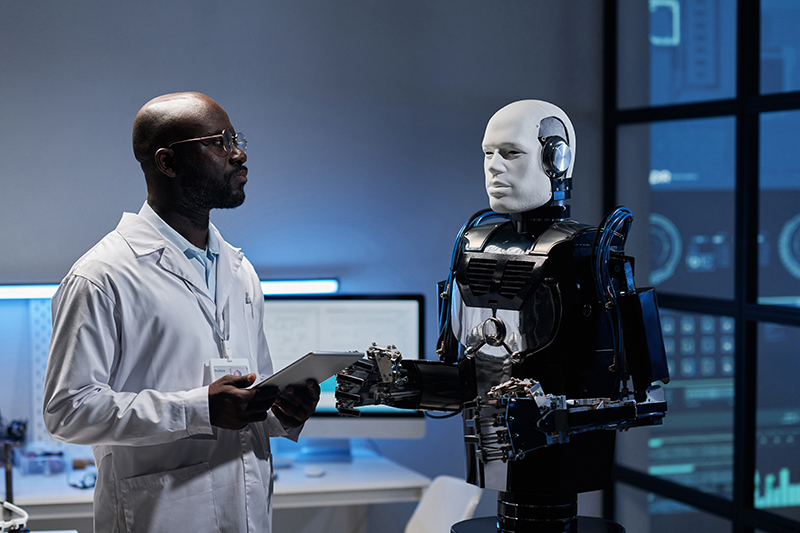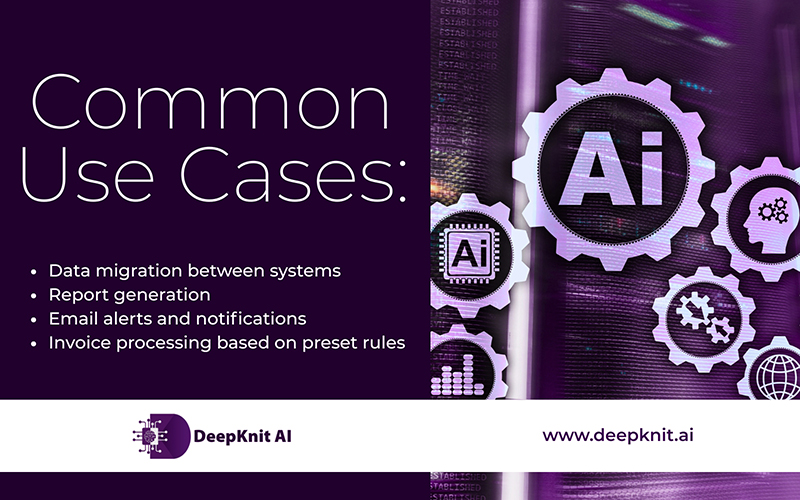“By 2030, AI and robotics will displace 9 million jobs and at the same time, create 19 million new roles in areas like AI development, data science, and human-AI collaboration.”
– World Economic Forum
Why? That question leads to another case study.
Around 60% of employees’ time is wasted managing repetitive manual tasks.
Businesses are now striving to thrive in this cut-throat, ever-evolving competitive digital landscape and automation has become an absolute necessity. Even, automation itself is rapidly evolving every second and while traditional automation has served as a cornerstone of operational efficiency for decades, the rise of intelligent automation is redefining what’s possible.
But what really sets these two apart?
If you are a business owner and your organization is on the brink of adopting a large-scale digital transformation or exploring automation solutions to boost efficiency, you need to understand the differences between traditional and intelligent automation. This post aims to unravel the core differences, benefits, challenges, and most importantly, what it means for your business moving forward.
What Is Traditional Automation?
This refers to rule-based systems designed to perform repetitive, mundane tasks. Often implemented through scripts or Robotic Process Automation (RPA), these tools follow predefined instructions to handle processes like data entry, invoice processing, and inventory management.
They’re predictable, consistent, and relatively easy to scale. However, they lack the capability to deal with unstructured data or make decisions independently.
Common Use Cases:
- Data migration between systems
- Report generation
- Email alerts and notifications
- Invoice processing based on preset rules.
What Is Intelligent Automation?
This next-generation approach brings together RPA and Artificial Intelligence (AI) technologies such as machine learning (ML), natural language processing (NLP), and computer vision. This allows systems to learn, reason, and make decisions-capabilities exceeding those of traditional automation.
Instead of simply following rules, these systems can understand and process unstructured data, respond to dynamic scenarios, and constantly improve via data feedback loops.
Common Use Cases:
- Intelligent document processing
- Customer support chatbots
- Fraud detection
- Predictive analytics.
Key Differences between Traditional and Intelligent Automation
Let’s dive into the critical areas that differentiate legacy approaches from more advanced, cognitive solutions:
- Decision-making Capabilities
- Legacy Systems: Operate on “if-then” logic. It cannot adapt to changes or make decisions based on scenario changes beyond its programmed rules.
- Intelligent Solutions: Capable of evaluating historical and real-time data, identifying patterns, and making informed decisions, akin to identifying anomalies in financial transactions or personalizing customer service.
- Data Processing
- Legacy: Limited to processing structured data (like Excel spreadsheets or SQL databases).
- AI-Driven: Can work with raw data like, emails, PDFs, images, and even handwritten texts by utilizing NLP, OCR, and AI models.
- Adaptability & Learning
- Legacy Automation: One-dimensional. Any change in the workflow or data structure will require reprogramming to adapt.
- AI Automation: Multi-dimensional. Systems can learn from new inputs and adapt to evolving business processes without regular manual interventions.
- Scalability and Complexity
- Legacy: The technology is best suited for low-complexity, high-volume tasks with minimal data diversity.
- AI-powered: Ideal for operations that involve complex workflows with multiple decision points, integration of vivid data sources, and dynamic outputs.
- Maintenance and Upkeep
- Legacy: Maintenance-heavy. Periodic manual intervention is required to process exceptions or update workflows accordingly.
- AI-driven: Maintenance-light. Because systems are intelligent and intuitive, they often self-improve and can handle exceptions with relative ease.
- Customer Experience
- Traditional: Offers efficiency, but limited personalization capabilities or responsiveness.
- AI-Powered: Capable of delivering hyper-personalized experiences at scale, learning customer preferences, behaviors, and needs in real-time.
- Integration Capabilities
- Traditional AI: Integrates with legacy systems using APIs or screen scraping, often requiring significant customization.
- Intelligent AI: Offers seamless integration with both legacy and modern platforms, often using AI-powered connectors and middleware.
Summary Comparison
| Parameter | Traditional Automation | Intelligent Automation |
|---|---|---|
| Decision-Making | Rule-based | Cognitive & Adaptive |
| Data Type | Structured | Structured+Unstructured |
| Scalability | Moderate | High |
| Learning Ability | None | Continuous |
| Maintenance | High | Moderate to Low |
| Implementation Time | Quick | Moderate to High |
| Use Cases | Straightforward tasks | Complex processes |
| ROI Potential | Moderate | High (long-term) |
While traditional automation is perfect for linear, simple tasks, intelligent automation is ideal for dynamic, data-driven environments.
Why Intelligent Automation is the Future
The new age digital landscape demands speed, agility and almost instant customer satisfaction. AI workflow automation enables organizations to not just accelerate process workflows, but also make them smarter.
From healthcare and finance to retail and logistics, the majority of forward-thinking companies are embracing intelligent automation to:
- Reduce turnaround times
- Enhance decision accuracy
- Minimize human error
- Improve operational agility
- Ensure better employee satisfaction.
Remember, making this shift is not just about adopting new tools; it’s also about adopting a new mindset.
DeepKnit AI – Future of Smart Automation
DeepKnit AI (DK AI) stands at the intersection of automation and intelligence. With deep expertise in building intelligent workflows, the team at DeepKnit AI ensures that automation isn’t just about eliminating repetitive work, but about transforming how your organization operates.
Regardless of whether you’re upgrading from traditional systems or starting fresh with intelligent solutions, here are some of DeepKnit AI’s automation solutions:
- End-to-end automation consulting
- Custom AI integration
- Domain-specific workflow intelligence
- Advanced document processing
Many organizations hesitate when it comes to Intelligent Automation (IA) due to its perceived complexity. That’s where DK AI’s human-centric approach helps bridge the gap, thereby bringing clarity, simplicity, and efficiency to your automation journey.
Traditional or Intelligent? The Road Ahead
Even though legacy automation holds relevance in certain contexts, modern automation is the present and the future. Intelligent workflow automation represents the next frontier of operational excellence for managing dynamic and cognitive tasks. With its ease of use, adaptability and low maintenance, intelligent automation is the straightforward choice.
By partnering with the right experts like DeepKnit AI, using the best intelligent automation tools for enterprises; you can experience the full potential of intelligent automation, today and tomorrow.
If you are a business looking to take the next step, remember: Automation isn’t just about doing things faster. It’s about doing them better.
Supercharge Your Digital Transformation
Traditional automation does the job. Intelligent automation transforms the way you work.
See How it Works


